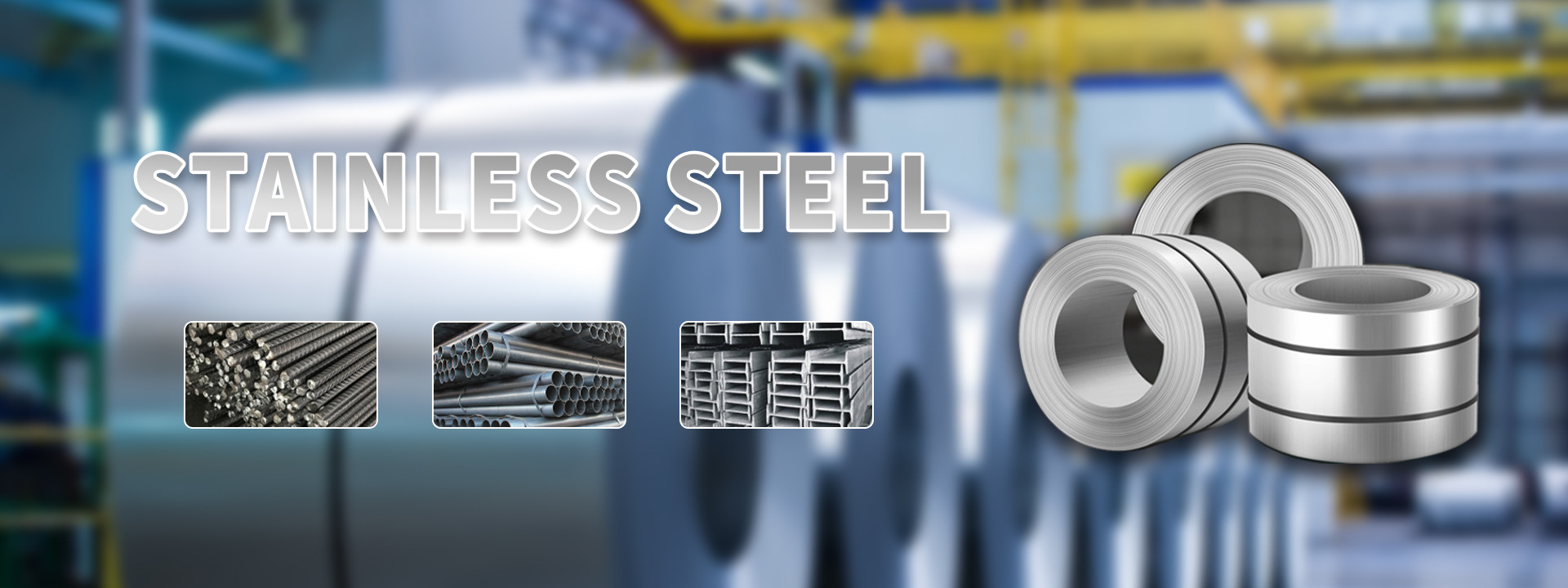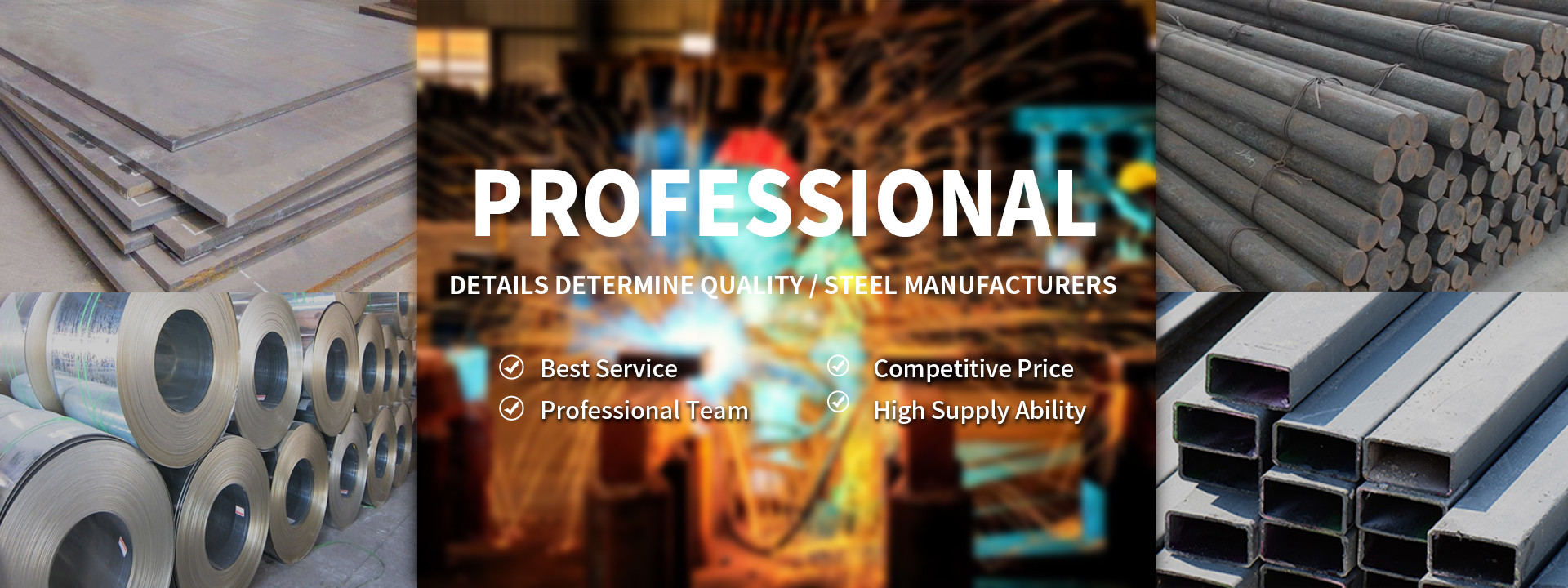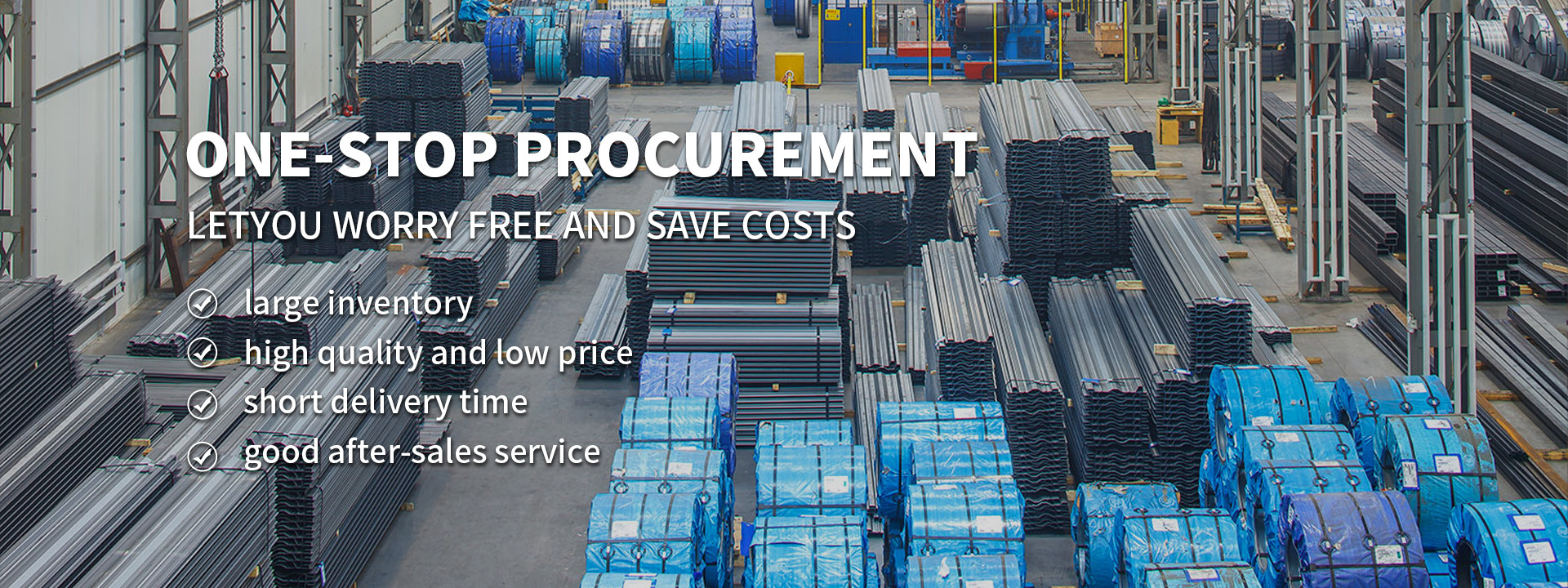Review of Shandong Heyixin Metal Materials Co., Ltd by a leading Canadian Business Owner
2024-08-14
This news is truly exhilarating! The complimentary article from our Canadian client is not only a testament to the recognition of our products, but also a profound affirmation of the hard work and unwavering dedication of our team. Such accolades not only bolster our confidence but also provide invaluable momentum for us to further expand into the international market.
First and foremost, I would like to express our heartfelt gratitude to this Canadian client on behalf of our company. Their appreciation not only fills us with pride but also motivates us to continue striving for excellence, offering even better products and services to our clients.
Next, I will carefully read this complimentary article, analyzing the client's evaluations and expectations in detail. This will help us grasp market demands and client needs more accurately, enabling targeted improvements and upgrades throughout product development, production, and sales.
Simultaneously, I will share this commendation with every member of our team, allowing everyone to share in this honor and joy. I am convinced that this accolade will serve as a perpetual source of motivation for our team, driving us to achieve even greater accomplishments in our future endeavors.
Lastly, I would like to extend my gratitude once again to this Canadian client for their support and trust. We will continue to adhere to the principles of "Quality First, Customer Foremost," continually enhancing our competitiveness and service standards to provide our clients with superior products and services. We look forward to establishing long-term and stable partnerships with more clients like you, jointly propelling the prosperous development of the steel industry.
View More
How China's Steel Manufacturing is Shaping the Cold Rolled Coil Market
2024-08-21
In the vast territory of steel, cold-rolled coils have become an indispensable precision cornerstone of modern industry with their unique charm and wide range of applications. From automobile manufacturing to home appliance production, from the construction field to precision instruments, cold-rolled coils support every corner of industrial development with their excellent performance and diverse uses.
The charm of cold rolled coils: the perfect fusion of precision and strength
Cold-rolled coils, as steel products processed by the cold-rolling process, have their greatest charm in the perfect fusion of precision and strength. During the cold rolling process, the steel undergoes multiple passes of rolling and stretching, which not only removes the oxide scale and surface defects produced during hot rolling but also achieves ultimate control over thickness, width and surface flatness. This high-precision characteristic makes cold-rolled coils useful in industries that require precision processing, such as body panels in automobile manufacturing and casings of home appliances, etc., which all require materials with extremely high dimensional accuracy and surface quality.
At the same time, cold-rolled coils also perform well in terms of strength. The cold rolling process refines the grains of the steel and makes the structure dense, thereby significantly improving the strength and hardness of the steel. This high-strength characteristic enables cold-rolled coils to withstand greater loads and stresses, providing a strong guarantee of product safety and reliability.
Advantages of cold rolled coils:
High precision: Cold-rolled coils have extremely high control accuracy in thickness, width and flatness, which can meet the needs of precision processing and are an ideal material for manufacturing high-precision parts.
High strength: The cold rolling process refines the grains of the steel and makes the structure dense, thereby improving the strength and hardness of the steel and enhancing its load-bearing capacity and wear resistance.
Excellent surface quality: The surface of cold-rolled coils is as smooth as a mirror, free of scale and defects, and is easy to carry out subsequent surface treatments such as coating and plating to improve the aesthetics and corrosion resistance of the product.
Good formability: Cold-rolled coils retain good plasticity and toughness during the cold working process, and are easy to form and process such as stamping and bending. They are suitable for manufacturing parts with complex shapes.
Disadvantages of cold rolled coil:
Higher cost: Due to the complex cold-rolling process, high energy consumption, and stricter requirements for raw materials, the production cost of cold-rolled coils is relatively high.
Poor dimensional stability: Cold-rolled coils may generate internal stress during processing, resulting in dimensional changes or deformation during subsequent use, so special attention is required.
Uses of cold-rolled coils: diversified stage display
The cold-rolled coil has become an indispensable and important material in modern industry due to its excellent performance and wide range of applications. The following is a detailed explanation of further uses for cold rolled coils:
1. Automobile manufacturing
In the field of automobile manufacturing, cold-rolled coil is an indispensable key material. It is widely used in the manufacture of automobile body panels, doors, hoods, roofs, chassis and various parts. The high strength, good plasticity and corrosion resistance of cold-rolled coils make the car body stronger and more durable, while improving the safety and comfort of the entire vehicle. In addition, cold-rolled coils also have good surface quality and can meet the aesthetic requirements of automobile appearance.
2. Home appliance manufacturing
In the field of home appliance manufacturing, cold-rolled coils also play an important role. It is widely used in the manufacture of casings, internal structures and components of household appliances such as refrigerators, washing machines, and air conditioners. The excellent surface quality and corrosion resistance of cold-rolled coils make home appliances more beautiful and durable. At the same time, its high strength and lightweight characteristics also help improve the overall performance and service life of home appliances.
3. Construction field
In the construction field, cold-rolled coils are also increasingly used. It is widely used in manufacturing roofs, exterior walls, doors and windows of buildings. The light weight, high strength and corrosion resistance of cold-rolled coils can meet the requirements of building structures and have certain fire protection properties. In addition, cold-rolled coils also have good processing properties and can be cut, bent and processed according to the needs of architectural design.
4. Precision instruments and electronic equipment
In the field of precision instruments and electronic equipment, cold-rolled coils also occupy a place. It is widely used to manufacture structural parts and components of precision instruments, as well as casings and internal structural parts of electronic products. The high precision and excellent surface quality of cold rolled coils can meet the needs of precision processing and ensure the accuracy and stability of the product. At the same time, its good electrical conductivity and electromagnetic shielding properties also help improve the overall performance of electronic products.
5. Food processing and packaging
In the field of food processing and packaging, cold-rolled coils also play an important role. It is widely used in the manufacture of packaging materials such as bottom lids and side seals of food cans, as well as parts for food processing equipment. The hygiene, corrosion resistance and recyclability of cold rolled coils make it an ideal choice for the food processing and packaging industry. At the same time, its good processing performance also facilitates the production of packaging containers of various shapes.
6. Other fields
In addition to the above fields, cold-rolled coils are also widely used in aerospace, shipbuilding, chemical industry, electric power and other industries. In the aerospace field, cold-rolled coils are used to manufacture key components such as aircraft parts and aero-engines; in the field of shipbuilding, it has become the first choice for hull structures and ship decoration materials; in the chemical industry and electric power fields, cold-rolled coils It is widely used in manufacturing various chemical equipment and power equipment due to its corrosion resistance and high strength.
In summary
Cold-rolled coils play an irreplaceable role in modern industry due to their excellent performance and wide range of applications. With the advancement of science and technology and the development of industry, the application prospects of cold-rolled coils will be broader.
When deciding which type of cold rolled coil to purchase, it is important to have a good understanding of your own or your customer's specific needs and expectations. Each type of cold rolled coil is composed of quite a few specific grades, each of which has its own characteristics and usage environment.
As a steel products manufacturer and supplier with more than 10 years of professional experience in this field, Heyixin Metal is committed to producing and supplying a comprehensive range of cold-rolled coils.
The company has passed IS09001 quality management system certification and CE certification. All products can be executed by ASTM, JIS, DIN, BS, and other common international standards. At Heyixin Metal, we
Always attach great importance to the optimization of products and services, and put the needs of customers first. Today, more and more customers around the world are looking to Heyixin Metal for help to meet their future steel needs,there by driving their business!
View More
Did you know about the range of applications for Galvanised Wire Coil?
2024-09-04
In our daily lives, many seemingly inconspicuous items embody the wisdom of technology and the convenience of living. Among them, Galvanized Wire Coil, this seemingly simple material, quietly plays an indispensable role across multiple sectors.
Galvanized Wire Coil, a versatile metallic material, boasts a wide range of applications in diverse fields and scenarios. Here are the key usage patterns summarized based on these various domains:
I. Construction Sector
Safety Net Support: On construction sites, Galvanized Wire Coil is frequently used to weave or support safety nets, providing essential protection for workers engaged in high-altitude operations and guarding against falling objects. Its high strength and corrosion resistance ensure the stability and durability of safety nets.
Scaffolding & Support Structures: When erecting scaffolding and temporary support structures, Galvanized Wire Coil serves to connect and secure various components, reinforcing the overall structural integrity. Its exceptional mechanical properties and weather resistance make it an ideal choice for these applications.
Fencing & Barrier Networks: Around construction sites or areas requiring isolation, Galvanized Wire Coils can be woven into fences or barriers, defining spaces, preventing unauthorized access, and safeguarding the construction site.
II. Agricultural Sector
Crop Field Fencing: In farmland, Galvanized Wire Coil is commonly utilized to create fences that deter wildlife from damaging crops. Its robust durability and corrosion resistance ensure the fence's long-term effectiveness under harsh conditions.
Livestock Fencing: Within the livestock industry, Galvanized Wire Coil is widely applied in constructing fencing that effectively separates animal enclosures, preventing livestock escapes and keeping out intruders, thereby securing the safety of agricultural production.
III. Home Decoration & Daily Life
Home Decoration: In home decoration, Galvanized Wire Coil, with its distinctive texture and linear appeal, has become a favorite among designers. It can be fashioned into lamp supports, shelf frameworks, and other decorative elements, adding an industrial flair to residential spaces.
Gardening & Garden Decorations: In gardening, Galvanized Wire Coil finds use in crafting trellises for climbing plants, fences, and decorative accents in gardens. Its sturdiness, durability, and ease of bending and cutting make it a valuable tool for gardening enthusiasts.
IV. Electrical & Telecommunication Engineering
Cable Fixing & Support: In electrical and telecommunication projects, Galvanized Wire Coil aids in securing and supporting cable lines, preventing loosening or breakage due to external forces, thereby ensuring the stable operation of electrical and communication systems.
Equipment Support & Reinforcement: During equipment installation and maintenance, a Galvanized Wire Coil can also be employed to support and reinforce equipment components. Its high strength and robust mechanical properties enable it to withstand significant loads while maintaining stability.
V. Other Sectors
Packaging & Logistics: In certain specialized packaging and logistics applications, Galvanized Wire Coil serves as a material for bundling and securing items. Its durability and ease of handling render it valuable in these contexts.
Artistic Creation & Handicrafts: In artistic endeavors and handicraft production, Galvanized Wire Coil is frequently utilized as a raw material. Artists and craftspeople capitalize on its unique texture and malleability to create diverse and unique works.
In Conclusion
The long-lasting lifespan of Galvanized Wire Coil in various harsh environments is attributable to its zinc-plating surface treatment. Zinc plating, an age-old method of metal corrosion prevention, involves uniformly coating the iron wire with a layer of zinc, effectively isolating it from direct contact with corrosive elements like air and moisture. This shiny silver-gray zinc layer not only enhances the wire's aesthetic appeal but also serves as a formidable shield against weathering and time erosion, making it an indispensable metallic material in modern society.
In the Next Chapter
We will delve into the various types of Galvanized Wire Coil and the specific scenarios where each type finds its application. Stay tuned to Heyixin Metal for more insights. Feel free to message us with any inquiries or requirements!
View More
How to choose the right model of Galvanized Wire Coil?
2024-09-11
Galvanized Wire Coils (Zinc-plated Steel Wire Coils) come in a diverse range of models, with their specifications and sizes typically determined by specific application requirements. Below are some common models and their specification ranges, but please note that actual products may vary due to differences among manufacturers and market demands.
Models and Specifications
1.Wire Gauge
The common diameter range of galvanized wire coils varies from 0.7mm to 5.8mm, with detailed specifications such as 0.7mm, 1mm, 1.2mm, 1.5mm, and up to larger diameters. These specifications are usually expressed in terms of SWG (Standard Wire Gauge) or BWG (Birmingham Wire Gauge).
For instance, SWG 8# corresponds to a diameter of approximately 4.06mm, while BWG 22# corresponds to a diameter of approximately 0.71mm.
The following are common models of Galvanized Wire Coil BWG
Number
Model Specifications
Diameter Range(mm)
Surface Treatment
Application
1
BWG8
About 4.19mm
Hot-dip Galvanizing/Electro-Galvanizing
Construction, agricultural fencing, handicrafts
2
BWG9
About 3.76mm
Hot-dip Galvanizing/Electro-Galvanizing
Construction, packaging
3
BWG10
About 3.40mm
Hot-dip Galvanizing/Electro-Galvanizing
Construction, agricultural fencing
4
BWG11
About 3.05mm
Hot-dip Galvanizing/Electro-Galvanizing
Construction, handicrafts
5
BWG12
About 2.77mm
Hot-dip Galvanizing/Electro-Galvanizing
Livestock fencing, orchard fencing
6
BWG13
About 2.41mm
Hot-dip Galvanizing/Electro-Galvanizing
Construction, packaging
7
BWG14
About 2.11mm
Hot-dip Galvanizing/Electro-Galvanizing
Handicrafts, construction
8
BWG15
About 1.83mm
Hot-dip Galvanizing/Electro-Galvanizing
Construction, agriculture
9
BWG16
About 1.65mm
Hot-dip Galvanizing/Electro-Galvanizing
Construction, packaging
10
BWG17
About 1.47mm
Hot-dip Galvanizing/Electro-Galvanizing
Construction, livestock fencing
...
...
...
...
...
n
BWG24
About 0.71mm
Hot-dip Galvanizing/Electro-Galvanizing
Handicrafts, packaging
2.Length and Packaging
The length and weight of galvanized wire coils vary depending on the specific product. Some products may be identified by the weight per coil, ranging from 1kg to 1000 kg/coil, while others may be marked by length or quantity, such as the number of coils or a specific length of steel wire per roll.
Packaging methods are also diverse, with common options including plastic liners and hessian or woven bags for outer packaging to ensure product safety during transportation and storage.
The following are common models of Galvanized Wire Coil SWG
Number
Model Specifications
Diameter Range(mm)
Surface Treatment
Application
1
SWG8
About 4.05~4.19
Hot-dip Galvanizing/Electro-Galvanizing
Construction, agricultural fencing, industrial manufacturing
2
SWG9
About 3.66~3.76
Hot-dip Galvanizing/Electro-Galvanizing
Construction, packaging, handicrafts
3
SWG10
About 3.25~3.40
Hot-dip Galvanizing/Electro-Galvanizing
Construction, agricultural fencing, livestock fencing
4
SWG11
About 2.95~3.05
Hot-dip Galvanizing/Electro-Galvanizing
Construction, handicrafts, industrial screens
5
SWG12
About 2.64~2.77
Hot-dip Galvanizing/Electro-Galvanizing
Livestock fencing, orchard fencing, building reinforcement
6
SWG13
About 2.34~2.41
Hot-dip Galvanizing/Electro-Galvanizing
Construction, packaging, industrial manufacturing
7
SWG14
About 2.03~2.11
Hot-dip Galvanizing/Electro-Galvanizing
Handicrafts, construction, screen making
8
SWG15
About 1.83~1.85
Hot-dip Galvanizing/Electro-Galvanizing
Construction, agriculture, packaging
9
SWG16
About 1.63~1.65
Hot-dip Galvanizing/Electro-Galvanizing
Construction, packaging, fixing of electronic components
10
SWG17
About 1.42~1.47
Hot-dip Galvanizing/Electro-Galvanizing
Construction, livestock fencing, handicrafts
...
...
...
...
n
SWG24
About 0.51~0.56
Hot-dip Galvanizing/Electro-Galvanizing
Precision instruments, handicrafts, electronic components
3.Surface Treatment
The surface treatment of galvanized wire coils is typically hot-dip galvanizing or electro-galvanizing. Both treatments provide excellent corrosion resistance for steel wire, but hot-dip galvanizing results in a thicker coating with stronger corrosion resistance.
Application
Due to their excellent corrosion resistance and mechanical properties, galvanized wire coils are widely used in multiple fields, including but not limited to:
Construction Industry: For the production of reinforcing meshes, fences, guardrails, etc.
Agriculture: For livestock fencing, orchard fencing, etc.
Handicrafts: For weaving, binding, and other craftwork.
Packaging Industry: For product bundling and packaging.
Precautions
When selecting galvanized wire coils, choose the appropriate model and specification based on specific application scenarios and requirements.
To ensure product quality and performance, it is recommended to select products from reputable manufacturers or those with certifications.
During use, follow relevant safety operation procedures to ensure the safety of personnel and equipment.
In conclusion, Galvanized Wire Coils come in various models, and the specific choice depends on actual needs. Heyixin Metal has the size and model you want, and you can always inquire for a satisfactory price!
Get a free quote! Get free samples!
View More
What is a Stainless Steel Plate?
2024-11-20
Stainless steel plate is a type of steel known for its corrosion resistance, durability, and aesthetic appeal. It contains at least 11% chromium, which provides resistance to rust and stains, making it suitable for a wide range of applications across multiple industries.
Characteristics of Stainless Steel Plate
Stainless steel plate features a smooth surface with high plasticity, toughness, and mechanical strength. It effectively resists corrosion from mild media such as atmosphere, steam, and water. Certain grades of stainless steel can also withstand highly corrosive chemicals like acids and alkalis.
Composition of Stainless Steel
Stainless steel typically consists of elements such as carbon, nitrogen, chromium, silicon, manganese, phosphorus, sulfur, aluminum, and nickel. The alloy composition determines the specific properties and characteristics of the stainless steel plate. For instance, high chromium and nickel contents enhance corrosion resistance, while molybdenum and boron improve welding and forming performance.
Manufacturing Process
The manufacturing of stainless steel plates involves steps such as melting, casting, rolling, and heat treatment. Raw materials are melted in electric arc furnaces or induction furnaces, then cast into ingots or slabs, and subsequently rolled into plates through hot and cold rolling processes. Heat treatments like annealing and quenching further enhance the mechanical properties and microstructure of stainless steel plates.
Advantages of Stainless Steel Plate
Corrosion Resistance: Chromium forms a protective oxide layer on the surface of stainless steel, preventing rust even in harsh environments.
Durability: A stainless steel plate has a long lifespan, maintaining its performance and appearance over time.
Hygiene: The smooth, non-porous surface inhibits bacterial growth and is easy to clean, making it suitable for food processing and medical applications.
Aesthetics: Available in various polished, brushed, and matte finishes, enhancing the aesthetic appeal of applications.
Strength and Flexibility: A stainless steel plate combines strength and flexibility, allowing it to be formed into complex shapes and designs without compromising durability.
Heat Resistance: Stainless steel can withstand high temperatures without losing structural integrity, making it suitable for applications involving heat or fire.
Recyclability: Stainless steel is 100% recyclable, making it an environmentally friendly choice for sustainable design and manufacturing.
Extended Applications of Stainless Steel Plate
Stainless steel plate is also used in various fields such as energy, transportation, consumer goods, water treatment, and artistic sculptures, due to its corrosion resistance, heat resistance, and aesthetic properties.
Conclusion
A stainless steel plate is indispensable in modern industrial applications due to its exceptional physical and chemical properties. From the elegant appearance of architectural designs to the durability in harsh chemical environments, stainless steel plate provides versatile solutions across multiple industries. With technological advancements, the performance and application range of stainless steel plates continue to expand, solidifying its foundational role in modern engineering and manufacturing. Whether as decorative accents, functional components, or structural supports, stainless steel plates consistently balances performance, aesthetics, and sustainability.
View More







